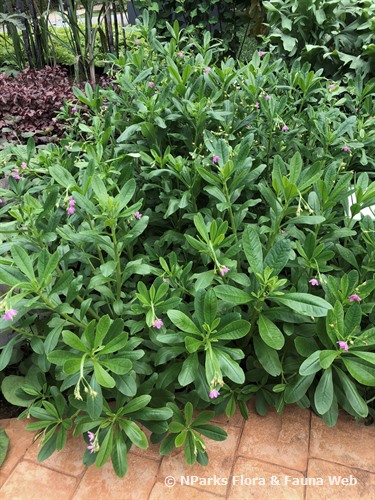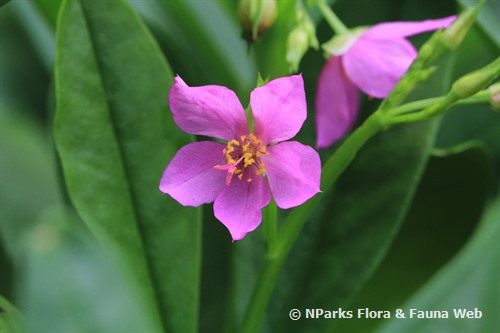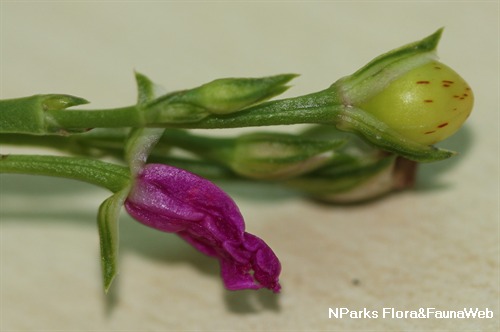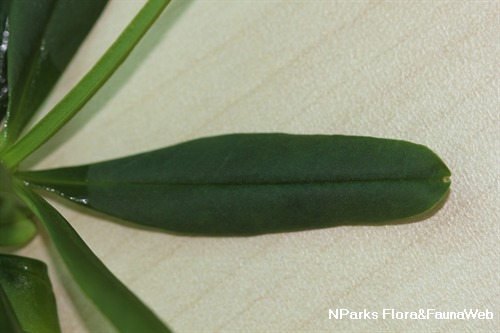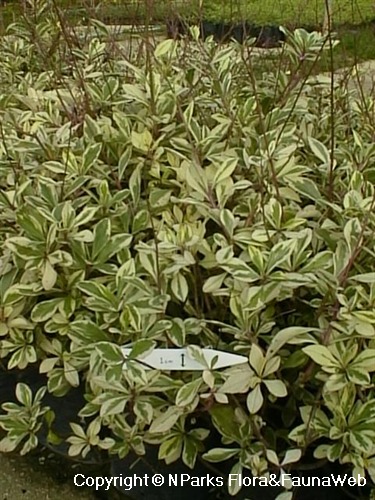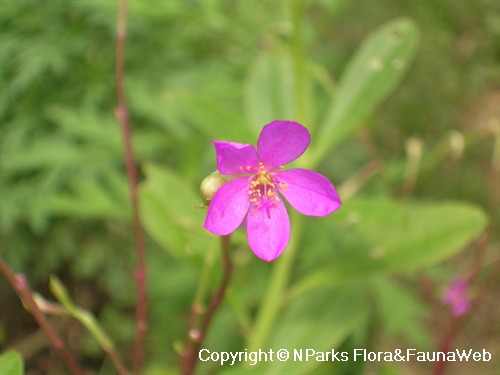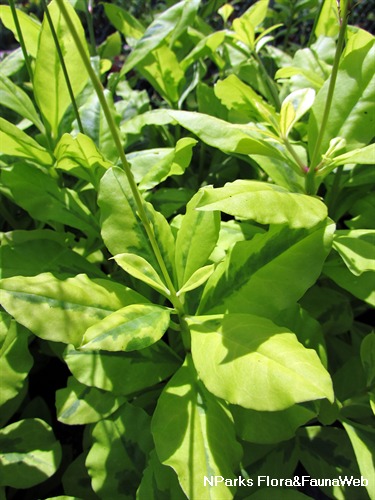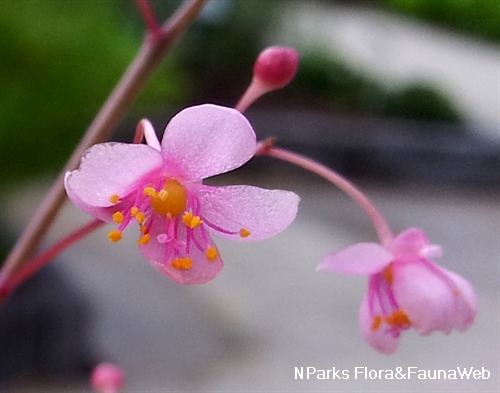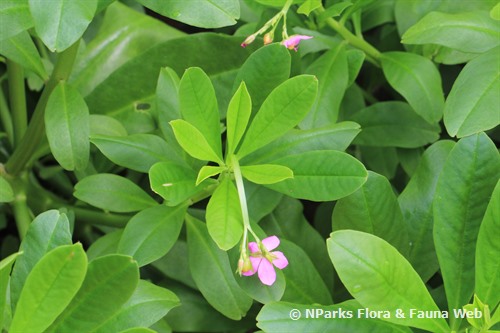
Back
Talinum fruticosum (L.) Juss.
| Family Name: | Talinaceae |
| Synonyms: | Talinum triangulare (Jacq.) Willd. |
| Common Name: | Surinum Purslane, Ceylon Spinach, Waterleaf |
Name
Classifications and Characteristics
| Plant Division | Angiosperms (Flowering Seed Plants) (Dicotyledon) |
|---|---|
| Plant Growth Form | Herbaceous Plant |
| Lifespan (in Singapore) | Perennial |
| Mode of Nutrition | Autotrophic |
| Plant Shape | Compact |
| Maximum Height | 0.3 m to 1 m |
Biogeography
| Native Distribution | Tropical Africa |
|---|---|
| Native Habitat | Terrestrial |
| Preferred Climate Zone | Tropical |
| Local Conservation Status | Non-native (Horticultural / Cultivated Only) |
Description and Ethnobotany
| Growth Form | Erect herb up to 0.3-1 m tall. |
|---|---|
| Foliage | Spathulate leaves are round near the tip and taper to a wedge shape at the base (3-15 cm long, 1-6 cm wide). |
| Flowers | The inflorescence stalk is triangular in cross-section and bears a cluster of flowers known as a corymboid thyrse,. |
| Fruit | Dry, dehiscent fruits are known as capsules. They are ellipsoid to globular and split into 2-3 compartments bearing tiny seeds. |
| Cultivation | The leaves can be harvested for consumption from 40-55 days after sowing to 6 months with intervals of 2 weeks between harvests. |
| Ethnobotanical Uses | Food (Fruit or Vegetable): In Southern Nigeria, the leaves and young shoots are widely eaten as a cooked vegetable, and also help to thicken sauces. In Thailand, the leaves are fried or added to soup with minced pork. Medicinal: Scientific Evidence of Medicinal Properties In pre-clinical trials, Surinam Purslane showed anti-diabetic (Babu et al., 2012), antioxidant (Liang et al., 2011) and cholesterol-lowering properties (Olorunnisola et al., 2016) in animals. |
Landscaping Features
| Thematic Landscaping | Economic Garden |
|---|
Fauna, Pollination and Dispersal
| Fauna Pollination Dispersal Associated Fauna | Bee-Attracting |
|---|
Plant Care and Propagation
| Light Preference | Full Sun |
|---|---|
| Water Preference | Moderate Water |
| Plant Growth Rate | Fast |
Foliar
| Mature Foliage Colour(s) | Green |
|---|---|
| Foliar Type | Simple / Unifoliate |
| Foliar Arrangement Along Stem | Rosulate / Rosette |
| Foliar Attachment to Stem | Sessile |
| Foliar Shape(s) | Non-Palm Foliage (Spathulate) |
| Foliar Venation | Pinnate / Net |
| Foliar Margin | Entire |
| Foliar Apex - Tip | Emarginate, Rounded |
| Foliar Base | Cuneate |
| Leaf Area Index (LAI) for Green Plot Ratio | 4.5 (Shrub & Groundcover - Dicot) |
Floral (Angiosperm)
| Flower & Plant Sexuality | Bisexual Flowers |
| Flower Colour(s) | Pink |
|---|---|
| Flower Grouping | Cluster / Inflorescence |
| Flower Location | Terminal |
| Flower Symmetry | Radial |
| Individual Flower Shape | Stellate / Star-shaped |
| Inflorescence Type | Thyrse |
Fruit, Seed and Spore
| Fruit Classification | Simple Fruit |
|---|---|
| Fruit Type | Dehiscent Dry Fruit , Capsule |
| Mature Seed Colour(s) | Black |
| Mature Seed Texture(s) | Glossy / Shiny |
| Seed Quantity Per Fruit | Numerous (>20) |
Image Repository
Others
| Master ID | 1202 |
|---|---|
| Species ID | 2495 |
| Flora Disclaimer | The information in this website has been compiled from reliable sources, such as reference works on medicinal plants. It is not a substitute for medical advice or treatment and NParks does not purport to provide any medical advice. Readers should always consult his/her physician before using or consuming a plant for medicinal purposes. |

